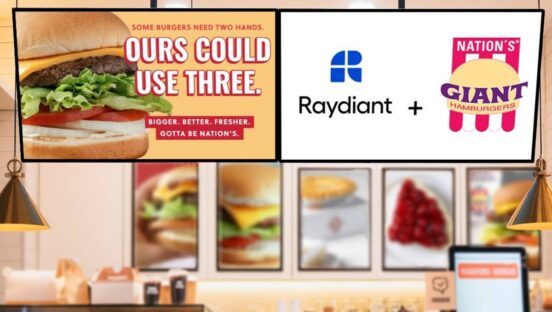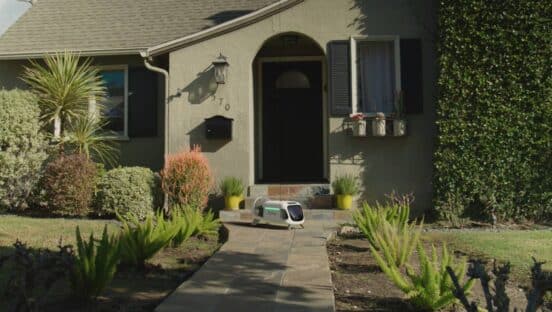As most of the food industry knows, the Food and Drug Administration (FDA) recently announced an extension to the rule released last year requiring that restaurant chains and retailers provide customers with calorie counts on available food and beverages by December 1, 2015.
Now restaurants have an extra year to meet this requirement, with the new deadline being extended to December 1, 2016.
With the FDA reporting that individuals consume about one-third of their calories outside of the home, informing customers of what they’re taking in is certainly an important step for the industry. And, of course, with the FDA’s ruling in place, food chains and retailers are looking for ways to display such information in their restaurants and stores in a cost-effective and engaging manner.
Since the initial announcement, many stores have begun the transition to a new method of displaying information to improve customer experience. With consistent menu changes and specials, the most cost-effective and practical way to showcase this information long-term is via digital signage technology. Those who have already implemented the FDA’s ruling through digital signage have indeed experienced positive results in all aspects of the new communication method, from additional up-sells to customer appeal and loyalty.
Menuboard options
Fortunately for storeowners, there is a multitude of ways to implement digital signage solutions to display nutrition information. From on-wall kiosks to customer-facing self-ordering kiosks to outdoor drive-thru solutions, digital signage can enhance the customer experience in any quick-service restaurant setting.
As many restaurants with menuboards offer drive-thru or walk-up ordering outdoors, restaurants should look for 100 percent sealed (even down to the cable entry) displays for their menuboards. With built-in thermal systems, display components are kept safely warmed in severe cold and properly cooled in severe heat, reducing electricity costs. They should also look for displays with an IP68 rating—this signifies a display’s protection against dirt, ice formation, and temporary submersion in water, as well as its ability to operate in extreme temperatures from -40–140 F. Shatterproof, impact-resistant glass is also a must for outdoor menuboards, especially in unattended public places.
Additionally, selecting a display that is optically bonded not only reduces glare and makes the display much stronger, but also reduces the display’s solar load. Polarization is also key in outdoor displays—without this, displays may be blacked out or be unable to read by folks wearing polarized lenses. These considerations in tandem with an ambient light sensor ensure nutrition information is always legible, which is of course our top priority.
Restaurants looking to implement new menus will also find digital signage to offer engaging options—such as in-floor touch-screen kiosks that allow customers the opportunity to view the menu and nutrition information before the order point, reducing wait times and waste from continually reprinting menus for these purposes.
Menuboard benefits
In addition to making the customer more informed, digital signage has many benefits for restaurant owners, particularly when compared to the static signage used in a large portion of food stores and retailers today. Here are three key benefits:
-
Flexibility: Digital menuboards offer restaurants the flexibility needed to update content. Promo items and menu content (new items, prices, sold-out items, calorie counts, etc.) can be quickly changed. Additionally, dayparting will no longer be a hassle as the breakfast menu can be easily switched to the lunch menu from a computer.
-
Increase in sales: Animated menu content is more eye-catching than static signage, which further entices customers to make additional purchases. This too offers restaurant owners the chance to visually promote new, healthier options.
-
Decrease in operational costs: No longer will a company need to regularly pay to update the signage due to wear and tear, updates on the menu items, nutritional details, promos, etc.
How digital signage can help the food industry
Most importantly, new digital menuboards containing nutrition details offer a solution for consumers who are trying to maintain a healthy lifestyle and/or those with food sensitivities.
While many folks look to reduce calorie, carbohydrate, and/or fat intake, depending on their dietary needs and health goals, monitoring for these counts while on the go can be quite frustrating when information is sparse. Individuals may even avoid restaurants or food providers with foods they feel are “bad.”
By offering nutrition information in an engaging way, restaurants can: create food awareness, allowing customers to feel confident in what they are purchasing by making an informed choice; help customers to make purchases based on the quality of food over quantity or price; and increase customers’ chances of weight loss success as visually seeing calorie counts helps consumers maintain mindfulness of their dieting goals.
While being required to change may make us all frustrated at times, by offering further nutrition information to customers in an engaging way, both the customer and the restaurant can indeed see benefits.
In the age of information, it is almost startling how much is missing from menus at times. Yet now, we all must be a part of the shift toward the mindfulness of menu content—from static to digital; from little information to a plate full of nutritional goodness. By staying ahead of the curve, improving your company’s tech-savviness, and seeing the FDA’s ruling as an opportunity to meet your customer’s needs and too improve engagement and profits, your business is bound to reap the benefits of change in the industry.












